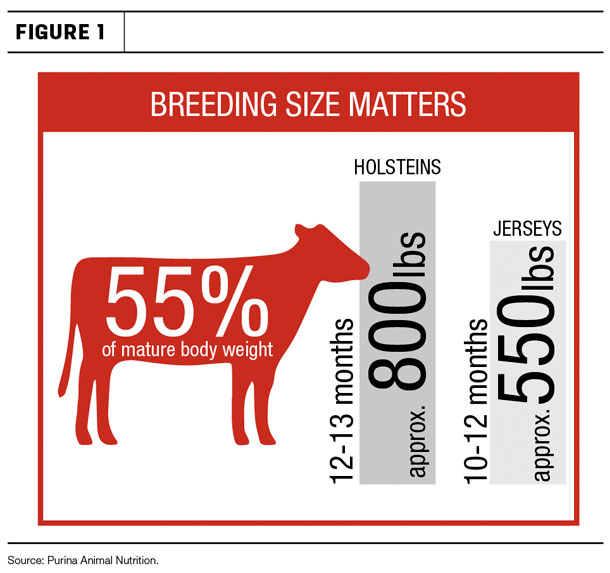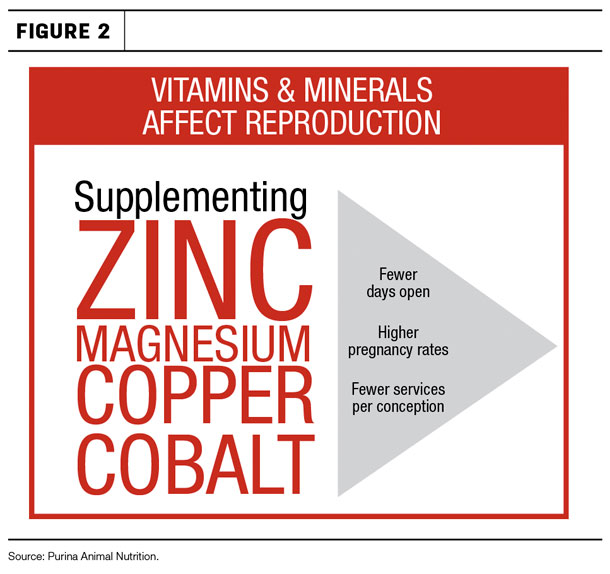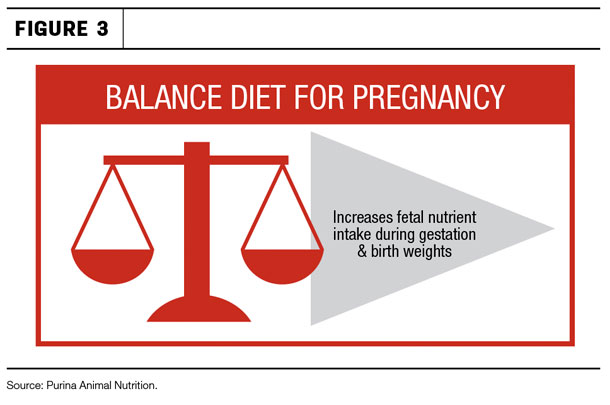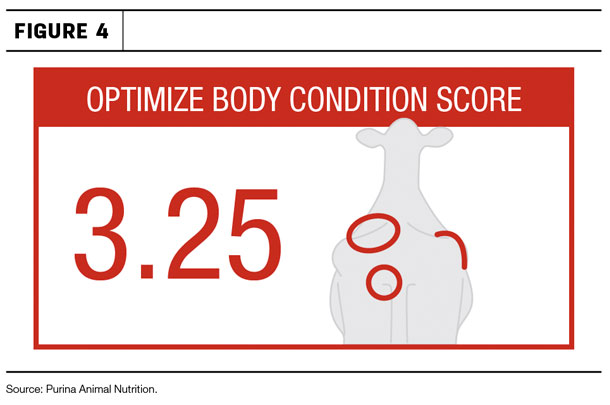Reaching breeding size sooner. Improving conception rates with fewer services. Achieving an earlier age at first calving. Healthier first-calf heifers and calves. Don’t you want it all on your farm?
While they may not be top-of-mind during milking, heifers are the future of your herd. They bring the next generation of genetics to the milking string. To optimize the return on your herd investment, nutrition programs can help set heifers up for success. Here are a few tips to take heifer reproduction to the next level:

1. Breeding size matters
When breeding size is achieved at the right time, heifers are more likely to enter the lactating herd earlier and produce more milk during their first lactation. Low-protein heifer diets can be a common problem interfering with frame and muscle growth rates, and may cause health challenges. Many farms will feed heifers the “refusals” from the lactating herd. This may seem like an economical choice and an efficient use of feedstuffs, but a diet made of refusals is likely to be highly inconsistent, have quality issues and lack adequate nutrients for a heifer.
Extra nutrients can be integrated into heifer diets with a tub or by supplementing the heifer ration with a base mix. This addition will balance out the diet and put heifers on track for improved growth.

2. Vitamins and minerals affect reproduction
The right balance of vitamins and trace minerals can improve ovarian function, fertility and embryo quality. Supplementing zinc, magnesium, copper and cobalt results in eight fewer days open, 0.5 fewer services per conception and higher pregnancy rates.
Ensuring heifers receive the vitamins and trace minerals needed for efficient reproduction is easy. Simply include a mineral supplement in the ration as a bag or lick tub formulated for developing dairy heifers to help increase pregnancy rates. This should make pregnancy check days even more exciting.

3. Balance diet for pregnancy
Simply put, a growing calf in utero eats what a heifer eats. If a pregnant heifer’s diet is deficient, then a fetal calf’s diet is lacking as well. For many farms, the heifer ration is often the last area of focus. However, nutrition during pregnancy becomes even more important as a heifer’s macro- and micronutrient requirements increase to maintain her needs and the needs of her growing calf.
Feeding a well-balanced diet to pregnant heifers increases fetal nutrient intake during gestation and increases birthweights. But don’t worry, it doesn’t have to be complicated. Simply giving them access to a lick tub or incorporating a mineral mix into their diets can ensure pregnant heifers have the necessary nutrients. With proper nutrition in utero, calves are more likely to have healthy birthweights and a strong start to life.

4. Optimize body condition score
In the months leading up to calving, it is important to focus on body condition. If heifers over-condition and reach a body condition score of 3.75 or greater, they often experience lower dry matter intakes pre-calving and post-calving, and increased incidence of energy-related disorders such as ketosis and displaced abomasum.
On the other hand, if heifers under-condition and achieve a body condition score below 2.75, they often underperform because of a prolonged negative energy balance. Calves from these heifers are typically less vigorous.
What can you do to keep heifers in the optimal range? Optimal levels and quality of protein in the diet will support increased milk production and fat-corrected milk during the first 120 days of lactation. Work with your nutritionist to determine if a lick tub or protein mix can help optimize protein in your pre-fresh heifer rations.
These recommendations are just starting points. Customize goals and solutions for your farm and your management style. What could happen if you put just one of these heifer tips into action on your farm? Just imagine the possibilities. ![]()
References omitted but are available upon request. Click here to email an editor.

-
Troy Wistuba
- Director of Dairy Technical Solutions
- Purina Animal Nutrition
- Email Troy Wistuba






